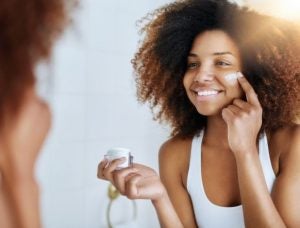This post originally appeared on EDF+Business.
Alissa Sasso, Project Manager, EDF+Business.
Anyone who’s recently purchased a personal care item knows how overwhelming the experience can be. From price and aesthetics to brands, there are many factors to consider. Now add the safety and impact of the ingredients, whether or not it’s “clean”, and the decision becomes more difficult.
The clean beauty industry has seen enormous growth, with projections estimating it will reach $11 billion by 2027. But the cosmetics industry has been underregulated for so long, there is no standard definition of “clean”. Brands and retailers entering this market therefore have flexibility to use the term “clean” to their own discretion.
Following a new roadmap, brands that are either creating a clean beauty program, or strengthening already-existing “clean” shops and labels, can use their influence to build a growing consensus around the use of the term to represent best-in-class. The roadmap provides guidance for companies on how to develop strong criteria for evaluating the health and environmental impacts of their products, prioritize ingredient safety and champion meaningful transparency in their clean beauty program.
“Clean” should describe beauty and personal care products that are made with the safest possible ingredients and have the lowest possible environmental impacts that the market can offer today. By adhering to this definition, companies can bring clarity to what’s been seen as a confusing space and accelerate the transition to safer products.
The clean beauty boom: A challenge and an opportunity
The proliferation of clean beauty claims and products is evidence of growing consumer preference for safer products. Social media mentions of #cleanbeauty grew 623% between 2016 and 2019, and the growth in prestige beauty skin care labels that positioned themselves as clean grew nearly 40% in one year.
But despite 93% of women having a preference to buy products marketed as clean, two thirds of female shoppers want greater transparency about what the clean label actually means. Often, the description of, or a definition for, how and what companies are defining as clean is not easily accessible, and, unfortunately, it’s not always credible.
 The lack of uniformity, coupled with marketing loopholes, can create the potential for greenwashing, and consumers are scrutinizing whether these companies are operating on baseless marketing claims. This mistrust is also undermining consumer confidence in what products are safer, underscoring the urgency for brands and retailers to build trust with consumers, rather than face potential reputational and financial risks.
The lack of uniformity, coupled with marketing loopholes, can create the potential for greenwashing, and consumers are scrutinizing whether these companies are operating on baseless marketing claims. This mistrust is also undermining consumer confidence in what products are safer, underscoring the urgency for brands and retailers to build trust with consumers, rather than face potential reputational and financial risks.
Building or strengthening a clean beauty program isn’t just about tapping into a new market or avoiding criticism or risk. It offers an opportunity to meet consumer needs while also reducing the environmental and human health impacts of products that we all use everyday.
Companies can educate consumers and make it easier for them to shop smarter and safer by providing clear criteria for ingredient safety and transparency into product ingredients. We’re seeing leading brands and retailers like Credo Beauty that are trying to establish a growing consensus around the use of the term clean to describe products without harmful ingredients, while also pushing for higher standards and more ingredient transparency. But we need all companies to commit to safer product formulation.
A framework for clean beauty leadership
Championing a clean beauty program enables retailers to drive a safer, sustainable marketplace, while gaining entry into a growing market opportunity, cultivating customer trust and managing against the risk of product liability.
- Create clear, credible criteria for prioritizing chemical safety.
- Commit to continuously challenging your business and your suppliers to offer the safest possible products and packaging for your customers.
- Ensure that clean products are available, accessible and affordable for all of your customers, regardless of race or income.
- Require transparency from your suppliers regarding ingredient selection.
- Be transparent with your customers about your methodology and make it easier for them to find the clean product offerings on the shelf.
- Demonstrate the financial and reputational value of a clean product portfolio to key stakeholders.
Learn more about putting these steps into practice to start driving a safer marketplace today.










One Comment
People are not aware that fast growth shampoos (obviously with no sulfates, no parabens, no DEA) exist. Folks can now enjoy longer hair and experience more options. Undoubtedly worth checking out.
Whether you’re exploring alopecia, damaged hair, preventing hair disorders, fast hair growth, hair care at large, the same ideas come to mind.
As a rule of thumb, you have to stay away from hair products and treatments that contain chemicals such as parabens, DEA or sulfates.
What is healthy for your hair is beneficial for your skin as well.
Clearly the content above is so accurate for multiple reasons. It avoids the common errors and errors too many fall into- getting horrible alternatives. Greatly appreciated!